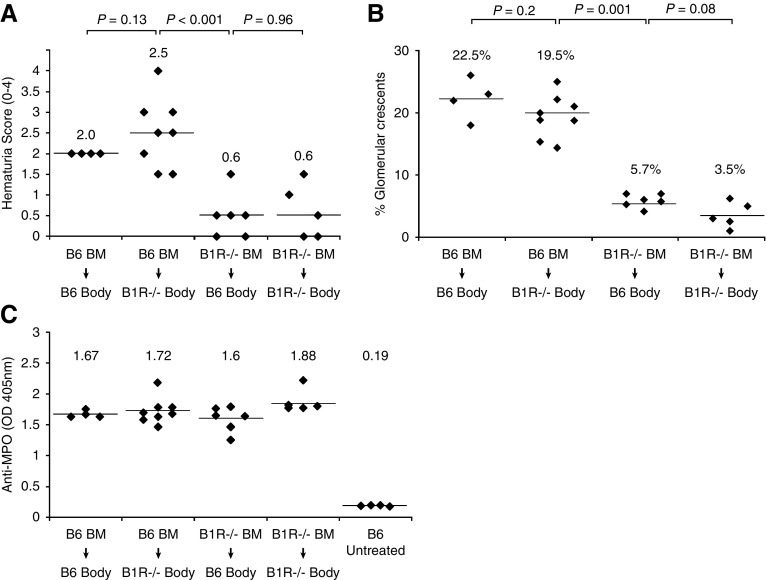Figure 3.
B1R deficiency in BM-derived cells but not B1R deficiency in non-BM–derived cells suppresses the pathogenicity of anti-MPO. BM chimeric mice were generated by transplantation of B1R−/− or WT B6 BM into lethally irradiated WT B6 or B1R−/− mice, respectively. Syngeneic BM transplant between the same genotype was used as positive (B6 BM into B6 mice) and negative (B1R−/− BM into B1R−/− mice) controls. All mice received anti-MPO antibodies 6 weeks after BM transplant and were euthanized at day 6 after anti-MPO injection. (A) Determination of hematuria by dipstick (scale, 0–4) revealed a significant reduction in B1R−/− → B6 chimeras. (B) Similarly, histopathologic evaluation of kidney samples from B1R−/− → B6 chimeras demonstrated a significant reduction in the severity of anti-MPO GN. These data indicate that B1R on BM-derived cells have a pathogenic role in the induction of murine MPO-ANCA GN. (C) Measurement of circulating anti-MPO titers by ELISA at euthanasia demonstrated similar levels in all groups after anti-MPO IgG injection.

